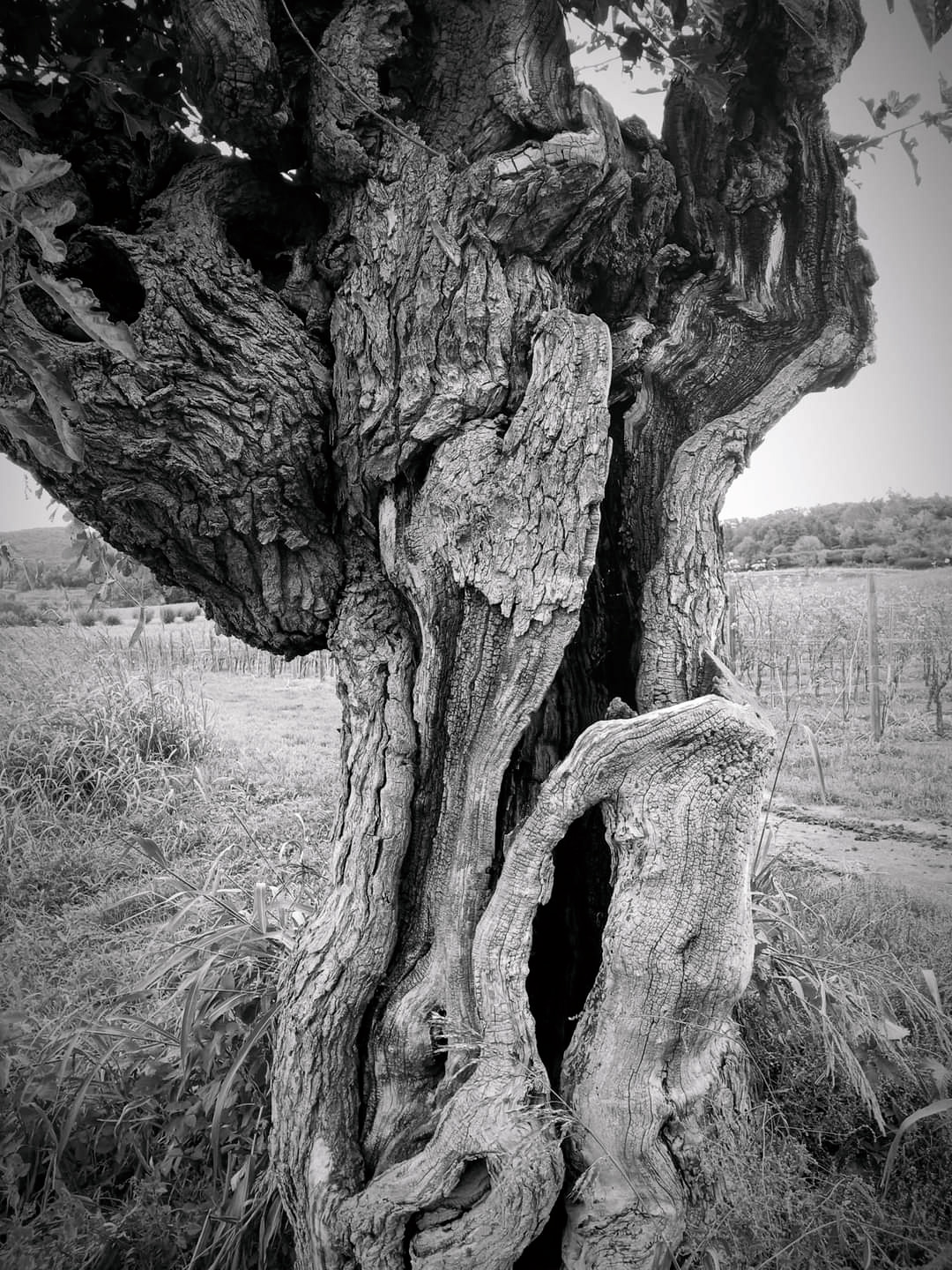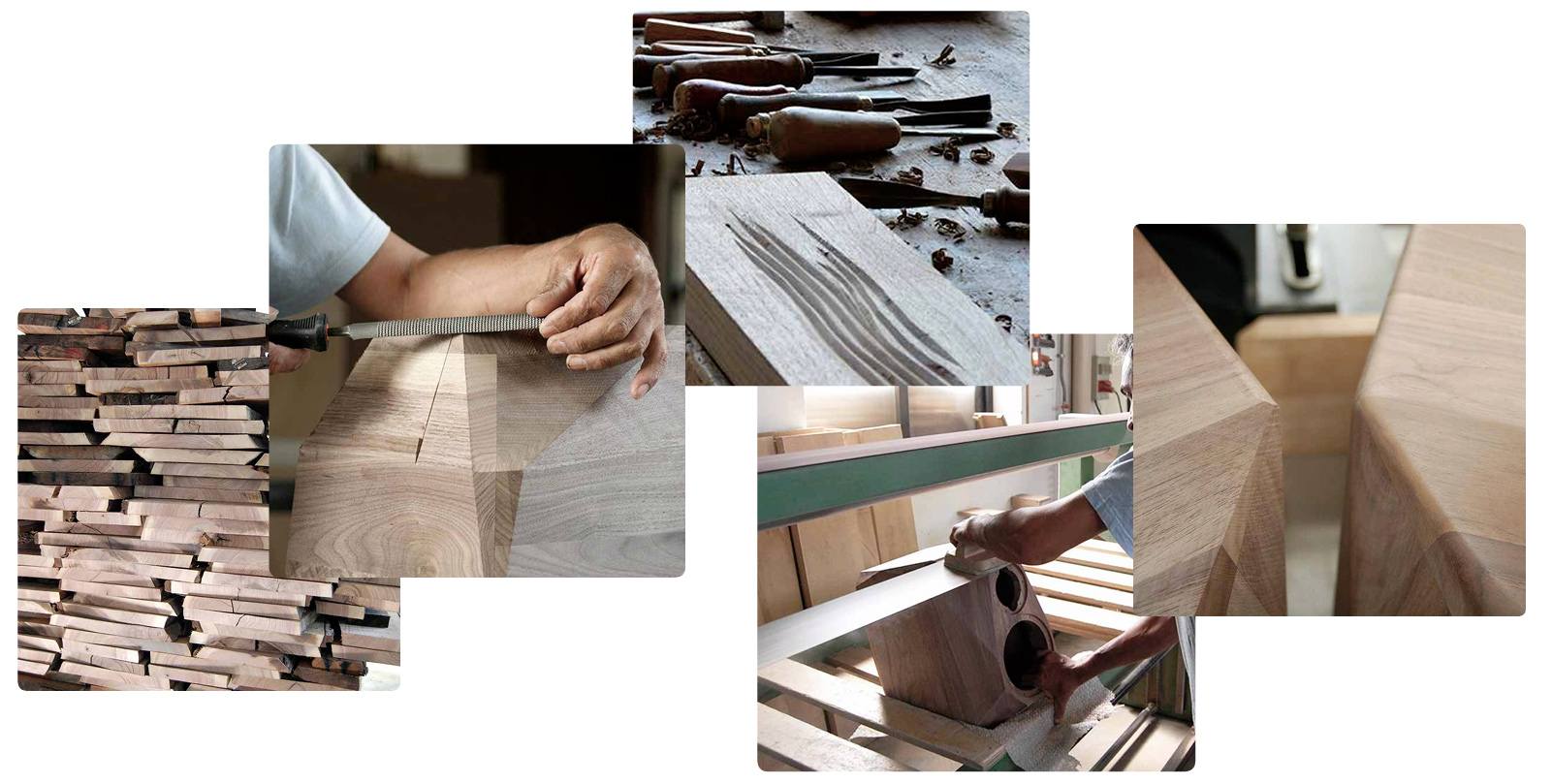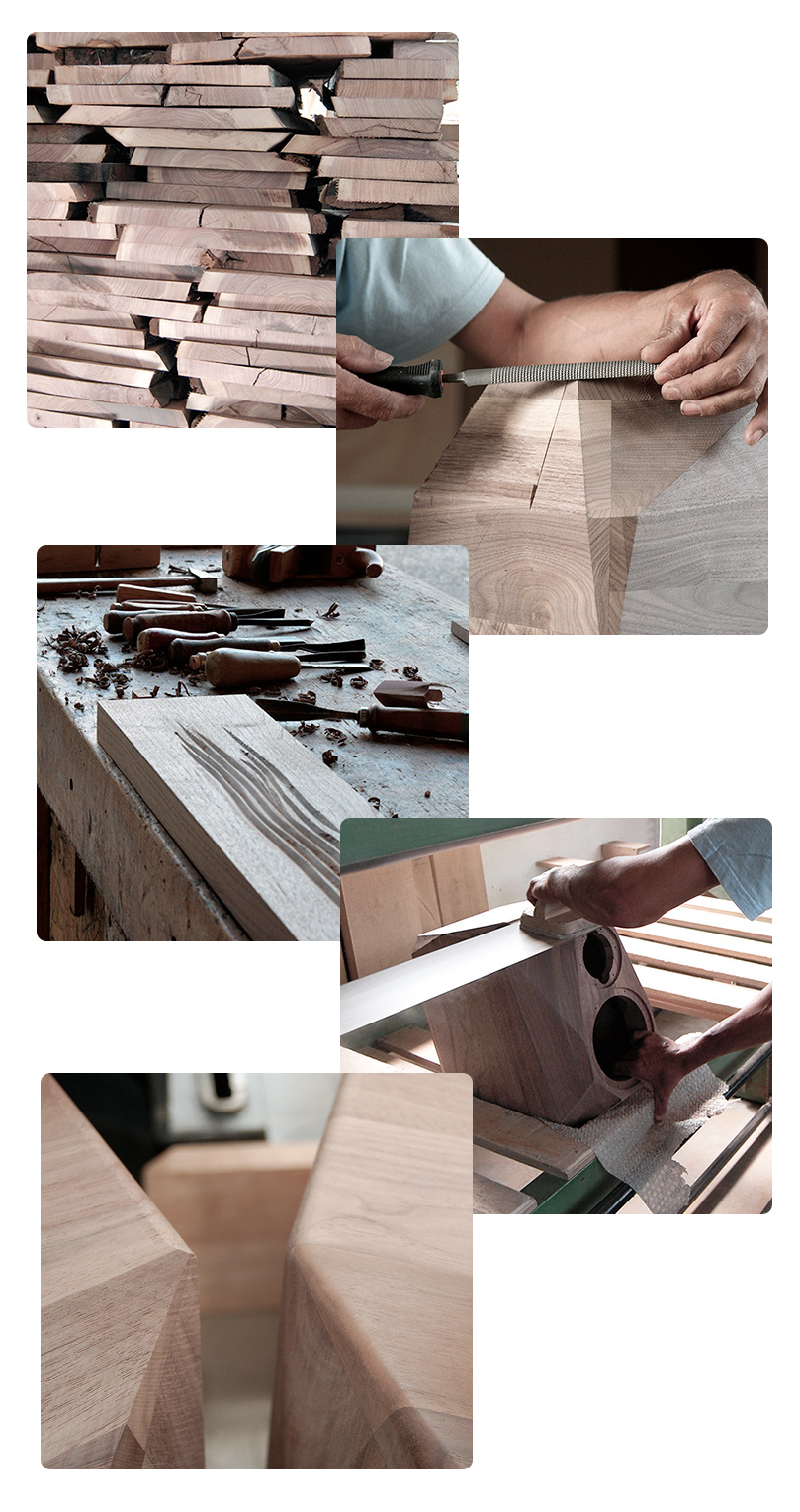LOVE FOR WOOD
PRODUCTION PROCESS AND CRAFTSMANSHIP

A Deep Connection with Nature
Wood is a wonderful material, a living organism that breathes, ages, and transforms.
Our love for wood stems from its authenticity, its ability to warm spaces with its mere presence and evoke feelings of warmth and welcome.
Even after being cut and transformed into beams, planks, or furniture, wood retains some of the characteristics that make it a dynamic and surprising material, very different from metal or plastic.
Wood cells, while no longer biologically alive, act like tiny sponges. In a humid environment, wood absorbs water vapor, expanding slightly. In a dry environment, it releases the moisture it contains, contracting. This constant exchange is its “breathing.”
This “breathing” also causes those small movements, settling, or even slight “creaking” sounds that can be heard in wooden furniture or structures.
These are not defects, but tangible signs of its dynamic nature.
Every grain, every knot, every imperfection tells a story, making each piece unique and unrepeatable.
It is a material that deeply connects us with nature, reminding us of the beauty of growth, resilience, and transformation.
In an era where sustainability is paramount, wood also stands out as a renewable resource with a low environmental impact, offering eco-friendly solutions for the future.


Craftsmanship is the beating heart of our work with wood.
It's the art of transforming a raw piece into something extraordinary through knowledge, patience, and manual skill.
This is how Diapason crafts its cabinets from North American Canaletto walnut.
The solid wood is aged for at least 25 years to limit natural variations in the grain before carving the cabinet slats.
This choice is dictated by the unique properties of this wood, primarily its pleasant listening experience, ideal for reproducing the timbre of live performances.
The hardness and resistance of walnut also allow for the creation of solid and stable cabinets over time, ensuring optimal acoustic performance through a living material that continuously interacts with its surroundings.
The times and processes of cabinetmaking.
The production process is complex and divided into multiple phases, lasting at least six months in total, respecting the rhythm of the seasons and the lunar phases, which influence the wood’s properties.
Each cabinet is assembled by joining individually carved slats, matched according to an overall design aimed at achieving the best acoustic and aesthetic match for the unique grain of the solid wood.
The cabinet is then left to rest for months, allowing the wood to further settle into its shape, just like a musical instrument.


